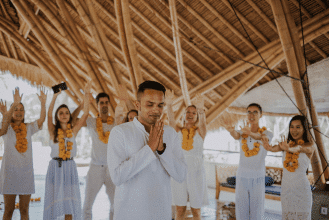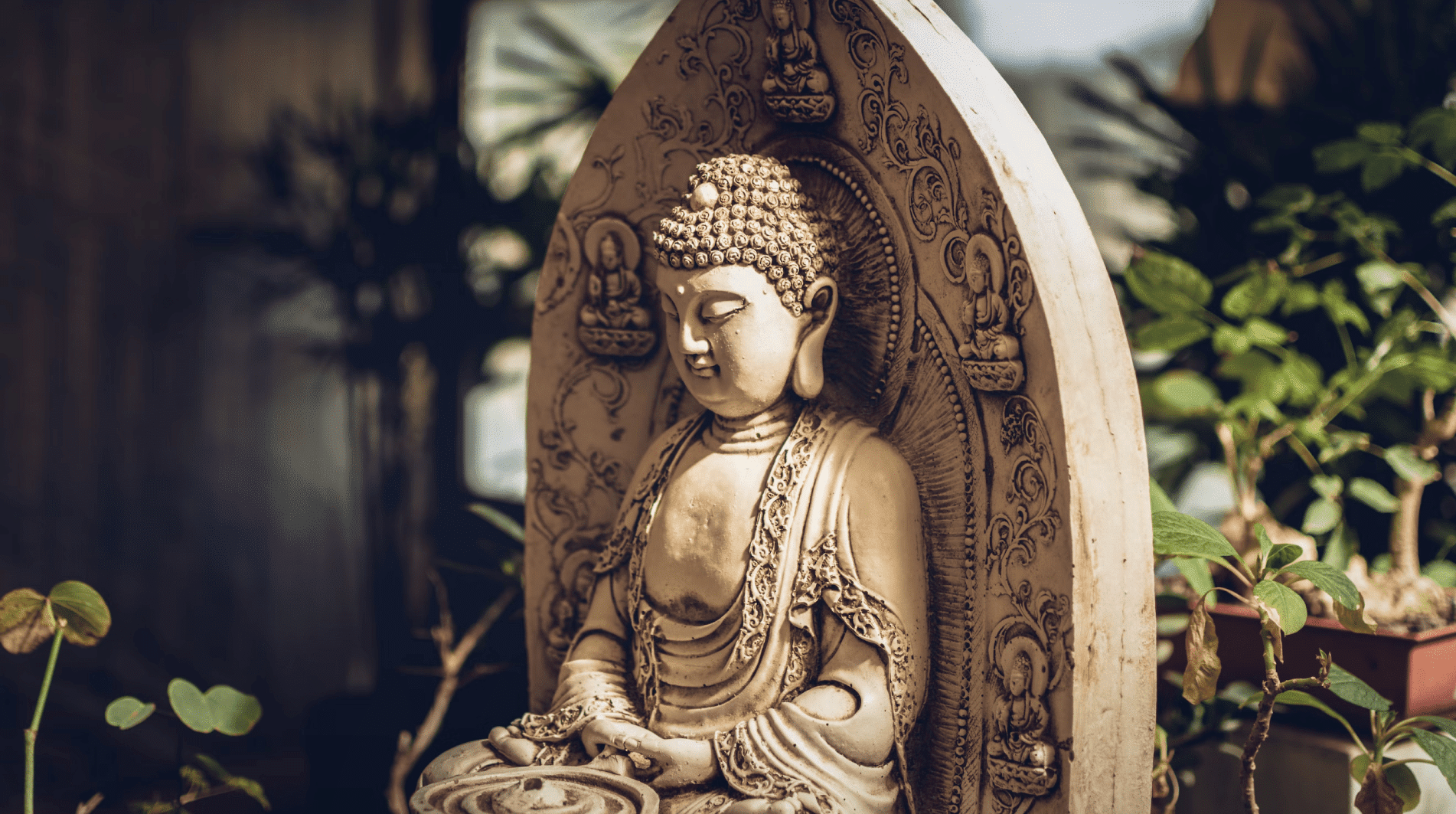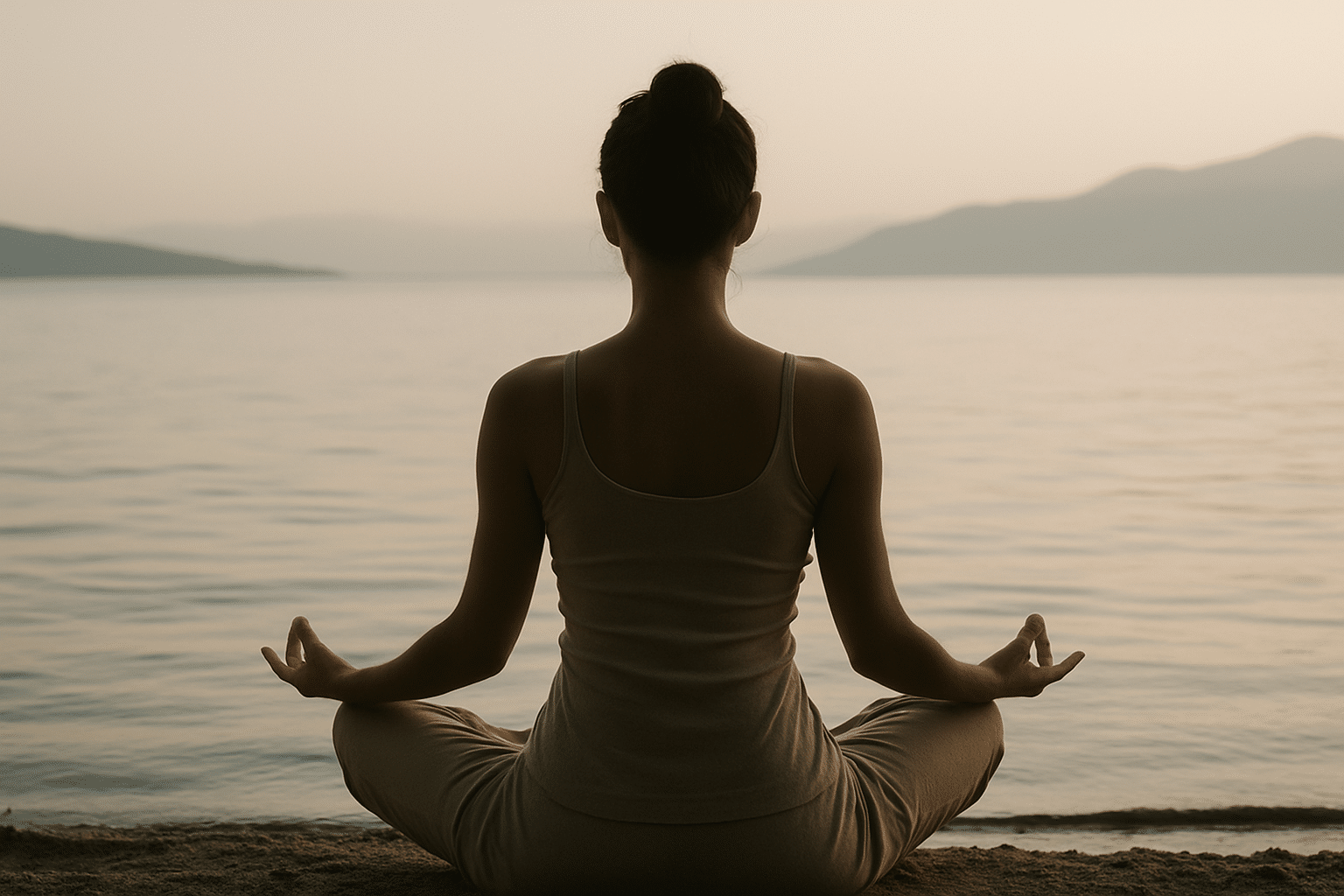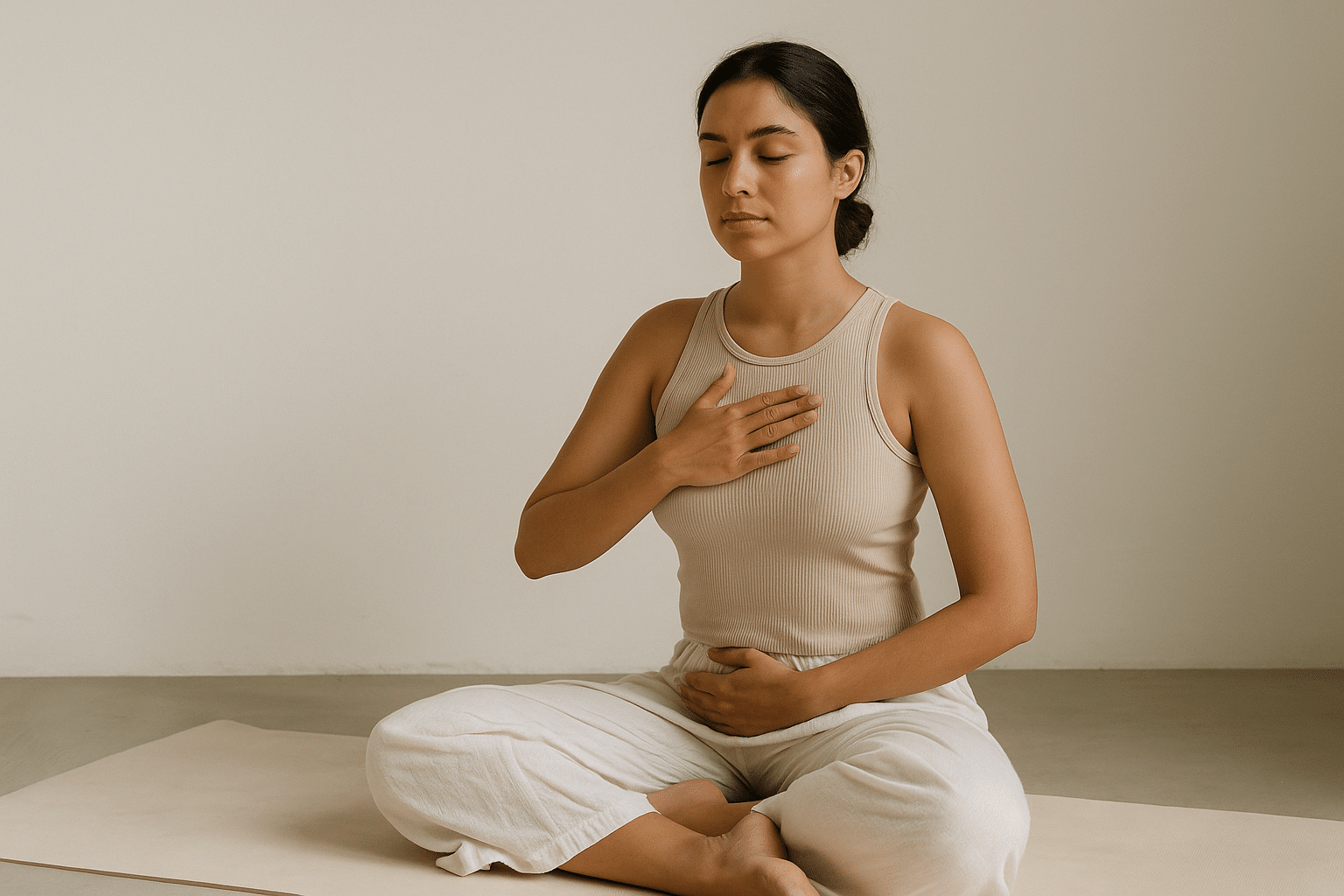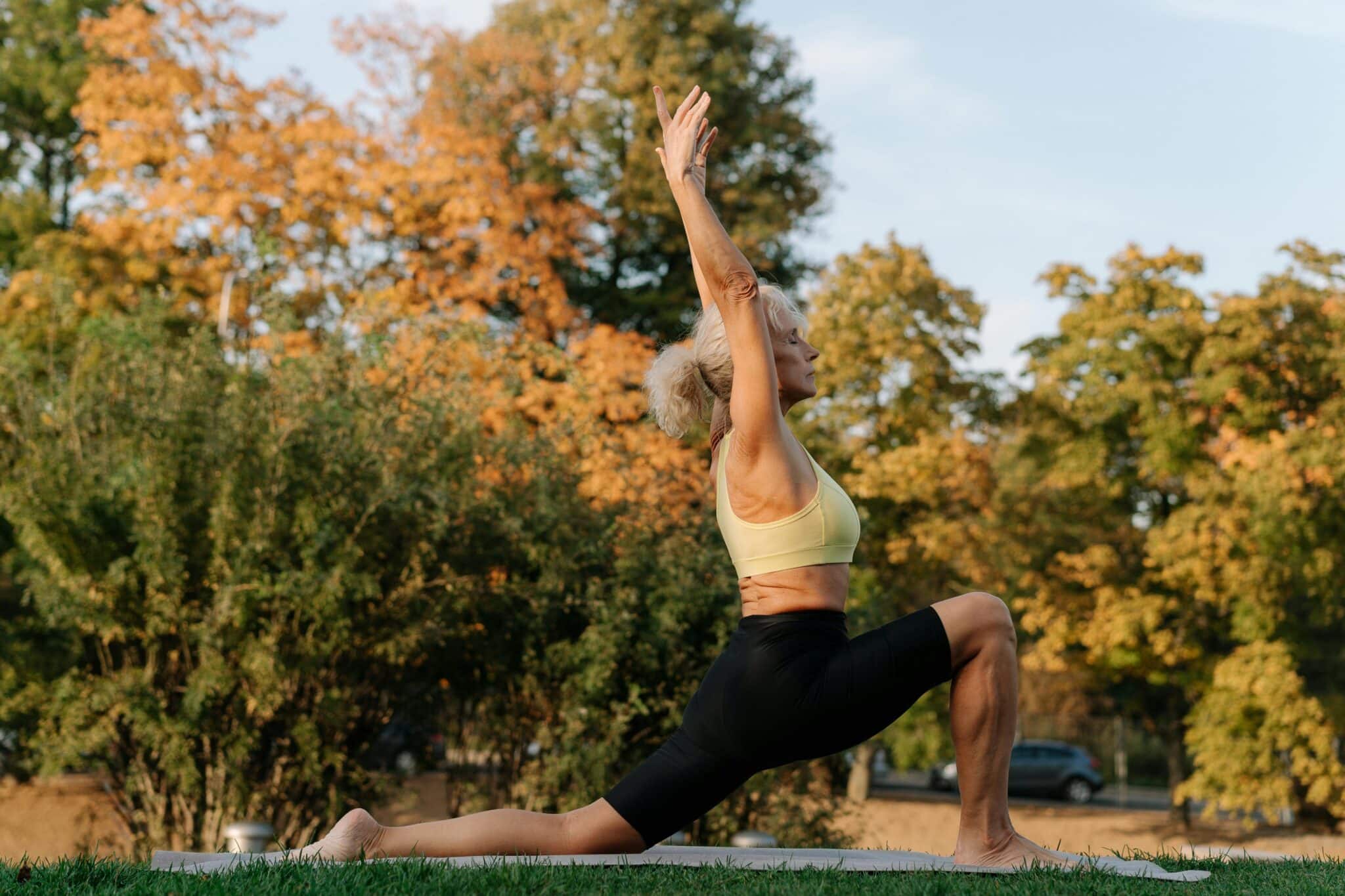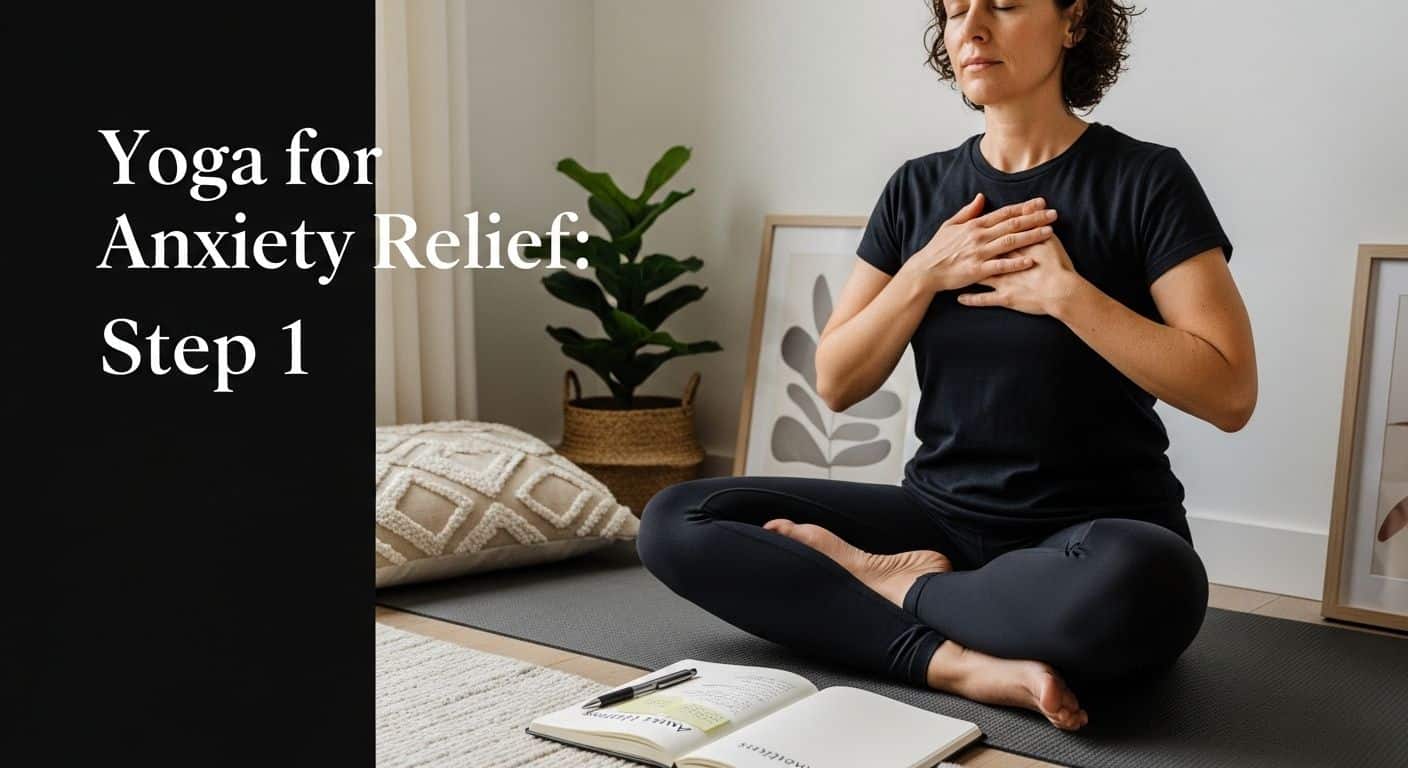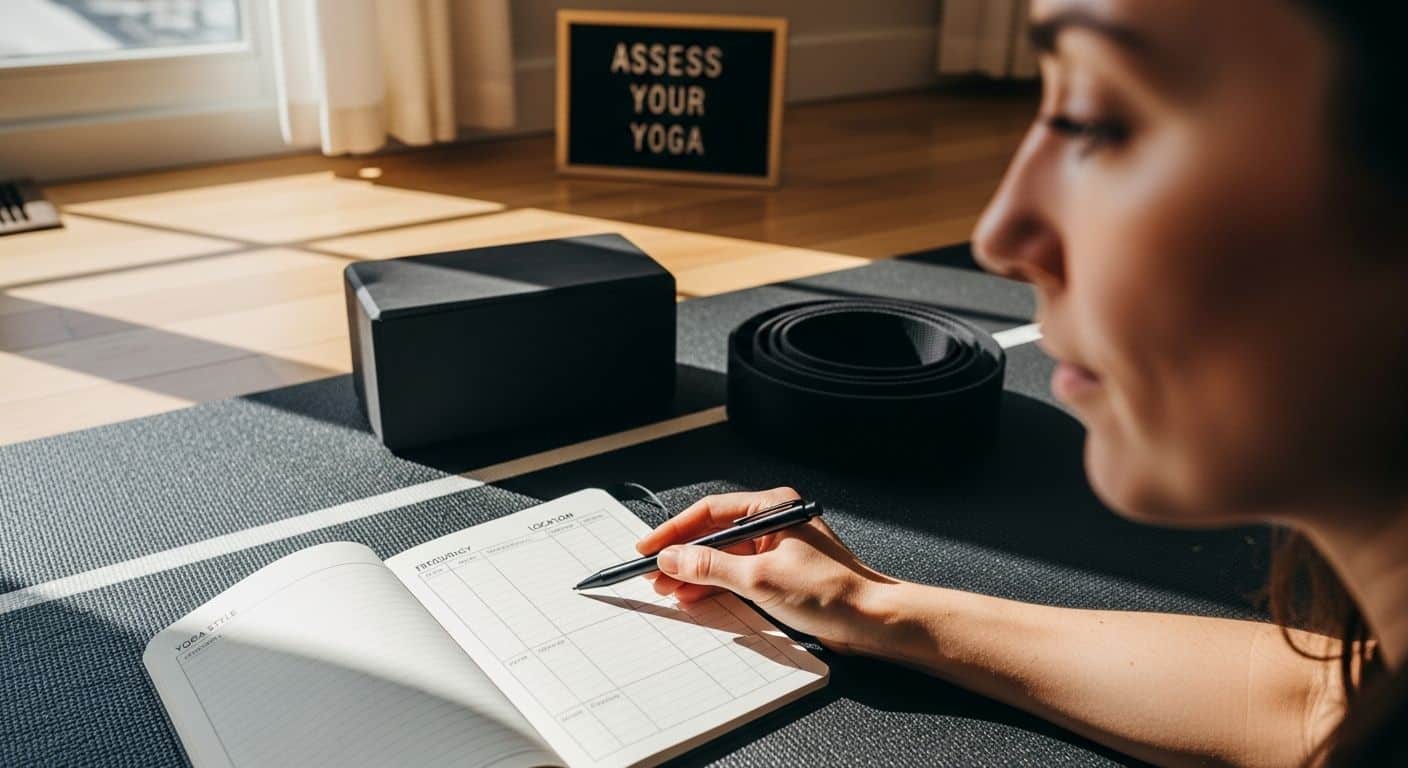
Yoga has become a daily anchor for millions, offering flexibility, strength, and calm in a busy world. Yet, most people stop at the basics and never explore the layers that lead to real transformation. Studies show that detailed self-assessment and mindful goal setting can increase progress and deepen benefits far beyond physical poses. This flips the usual yoga story on its head and proves that small shifts in how you reflect and practice open up growth most of us never expect.
Table of Contents
- Step 1: Assess Your Current Yoga Routine
- Step 2: Set Clear Goals For Your Practice
- Step 3: Incorporate Advanced Techniques And Variations
- Step 4: Enhance Your Mindfulness And Breathing
- Step 5: Seek Feedback From Experienced Instructors
- Step 6: Reflect And Adjust Your Practice Regularly
Quick Summary
| Key Point | Explanation |
|---|---|
| 1. Assess Your Current Yoga Routine | Document your practice details to understand your strengths and weaknesses clearly. |
| 2. Set Specific, Measurable Goals | Create ambitious yet realistic objectives to guide your practice evolution. |
| 3. Incorporate Advanced Techniques Gradually | Explore new asana variations and techniques to enhance your practice intentionally. |
| 4. Enhance Breath Awareness and Mindfulness | Develop a consistent breathing practice to deepen your mental clarity and emotional regulation. |
| 5. Regularly Reflect and Adjust Your Practice | Dedicate time to evaluate your progress and make necessary modifications for growth. |
Step 1: Assess Your Current Yoga Routine
Deepening your yoga practice begins with honest self-reflection and a comprehensive understanding of your current routine. This initial step is crucial for creating a strategic path toward meaningful growth and transformation. The goal is not to critique your existing practice but to gain clear insights that will guide your future development.
Start by documenting your current yoga journey with precision and curiosity. Pull out a dedicated journal or create a digital tracking document where you can systematically record your practice details. Capture key information about your current routine, including the styles of yoga you practice, frequency of sessions, typical duration, and the primary yoga spaces where you typically move through your sequences.
As you compile this information, consider exploring different dimensions beyond just physical practice. Learn more about holistic yoga development by examining not just your asana practice, but also your understanding of breathwork, meditation, and philosophical foundations. The National Center for Complementary and Integrative Health emphasizes that a comprehensive yoga assessment involves understanding personal health status, individual goals, and current physical capabilities.
Reflect deeply on your motivations and challenges. What drew you to yoga initially? What aspects of your practice feel most challenging or rewarding? Are there specific postures or sequences that consistently challenge you? Understanding these personal dynamics will help you design a more intentional path forward. Pay attention to both physical sensations and emotional responses during your practice, as these insights will be instrumental in identifying areas for potential growth and transformation.
To verify you’ve completed this assessment effectively, your documentation should include:
- A clear snapshot of your current yoga routine
- Personal observations about strengths and limitations
- Specific areas where you seek improvement
- Initial goals for deepening your practice
Remember, this assessment is not about judgment but about creating a compassionate, informed roadmap for your yoga journey. The more honestly and thoroughly you examine your current practice, the more effectively you can design meaningful steps toward deeper understanding and skill development.
To help you organize your self-assessment as described, use the checklist below to ensure you cover each recommended aspect when evaluating your current yoga routine.
| Assessment Item | Description | Verified (Yes/No) |
|---|---|---|
| Practice Snapshot | Record styles practiced, frequency, duration, and locations | |
| Strengths Identification | Note personal strengths in your yoga journey | |
| Limitations/Challenges | List recurring difficulties or challenging postures | |
| Areas for Improvement | Highlight specific skills or aspects for growth | |
| Initial Goals Set | Outline your main intentions for deepening practice | |
| Emotional & Physical Insights | Observe feelings and body signals during practice |
Step 2: Set Clear Goals for Your Practice
Transforming your yoga practice requires more than passive participation—it demands intentional, strategic goal setting that aligns with your personal growth and aspirations. Goals are the compass that will guide your yoga journey, transforming random practice into purposeful progression. This step is about crafting specific, meaningful objectives that will challenge and inspire your development.
Begin by creating a comprehensive vision that encompasses multiple dimensions of your yoga practice. Consider physical, mental, and spiritual objectives that extend beyond basic posture mastery. Explore comprehensive yoga teacher training insights to understand the holistic nature of goal setting. According to research from the International Journal of Yoga, specificity is crucial when establishing practice goals.
This table summarizes the main steps to deepen your yoga practice, showing the outcome to expect from each stage and indicating the general difficulty of getting started.
| Step | Key Outcome | Difficulty |
|---|---|---|
| Assess Current Routine | Clear understanding of strengths and areas to improve | Easy |
| Set Clear Goals | Defined, actionable practice objectives | Moderate |
| Incorporate Advanced Techniques | Enhanced physical and mental challenge | Moderate |
| Enhance Mindfulness & Breathing | Deeper self-awareness and emotional regulation | Moderate |
| Seek Instructor Feedback | Personalized insights and correction | Varies |
| Reflect & Adjust Regularly | Ongoing evolution of personal growth and skill | Easy |
Your goals should be both ambitious and realistic, striking a delicate balance between challenge and achievability. Perhaps you want to develop deeper meditation skills, master complex asana sequences, improve flexibility, or cultivate a more consistent daily practice. Some practitioners aim to integrate philosophical teachings more deeply, while others focus on physical transformation. Whatever your objectives, articulate them with crystal clarity.
Write down your goals using a structured approach. Create a dedicated yoga journal or digital document where you can track progress, document insights, and maintain accountability. Break larger goals into smaller, measurable milestones that provide regular opportunities for celebration and recalibration. This incremental approach prevents overwhelm and maintains motivation.
To verify you’ve effectively set goals, your documentation should include:
- Specific, measurable yoga practice objectives
- Realistic timelines for achieving these goals
- Potential challenges and strategies for overcoming them
- Personal motivations underlying each goal
Remember that goal setting is not a one-time event but an ongoing process of reflection and adjustment. Your yoga journey is dynamic, and your goals should evolve as you grow. Approach this step with curiosity, compassion, and a commitment to continuous personal development.
Step 3: Incorporate Advanced Techniques and Variations
Advancing your yoga practice requires a strategic approach to introducing complexity and depth beyond basic postures. This step is about thoughtful exploration and intelligent progression, moving from foundational sequences to more nuanced and challenging techniques that challenge both body and mind.
Discover expert techniques for advanced practice that will help you transform your approach. According to research from the National Center for Complementary and Integrative Health, understanding the subtle variations and advanced techniques can significantly enhance your overall yoga experience.
Begin by selecting one primary area of focus where you want to develop more advanced skills. This might involve exploring more complex asana variations, deepening your understanding of alignment principles, or integrating sophisticated breathwork techniques. Pay attention to the subtle energetic shifts that occur as you introduce more challenging elements. Advanced practice is not about performing the most difficult postures but about developing a more refined, intentional relationship with your movement and breath.
Work systematically by introducing one new technique or variation at a time. Practice these variations initially with a qualified instructor who can provide precise guidance and ensure you’re maintaining proper form and safety. Consider attending specialized workshops or working with an experienced yoga mentor who can offer personalized insights into advanced practice techniques.
As you explore these advanced approaches, maintain a spirit of curiosity and humility. Some variations might feel challenging or even impossible initially, and that’s part of the growth process. *Listen carefully to your body, respecting its current limitations while gently expanding your capabilities

*.
To verify you’ve successfully incorporated advanced techniques, your practice documentation should demonstrate:
- Specific advanced techniques you’ve begun exploring
- Modifications and adaptations you’ve developed
- Observations about physical and energetic changes
- Reflections on challenges and breakthroughs
Remember that advancing in yoga is not a linear progression but a circular journey of continuous learning and self-discovery. Each variation you explore offers an opportunity to understand yourself more deeply, both physically and mentally.
Step 4: Enhance Your Mindfulness and Breathing
Mindfulness and breathing represent the heart of transformative yoga practice, serving as powerful tools for mental clarity, emotional regulation, and profound self-awareness. This step focuses on elevating your breath consciousness and cultivating a deeper meditative state that transcends physical movement and touches the essence of your inner experience.
Explore advanced meditation techniques that can support your mindfulness journey. According to research examining yogic breathing practices, deliberate breath control can significantly reduce stress and enhance overall psychological well-being.
Begin by establishing a dedicated daily breathing practice that extends beyond your regular yoga sequence. Choose a consistent time and create a quiet, undisturbed environment where you can focus entirely on your breath. Start with simple techniques like diaphragmatic breathing, gradually progressing to more advanced pranayama methods such as alternate nostril breathing or box breathing. The goal is not perfection but consistent, mindful engagement.
Integrate mindfulness into your practice by developing a non-judgmental awareness of your breath and bodily sensations. This means observing your breath without attempting to modify or control it initially. Notice the natural rhythm, temperature, and subtle movements accompanying each inhalation and exhalation. *Treat your breath as a living, dynamic experience rather than a mechanical process
*.
Practice seated meditation that emphasizes breath awareness, starting with short five-minute sessions and gradually extending duration. Use guided meditation recordings if you find it challenging to maintain focus independently. Remember that wandering thoughts are normal—gently redirect your attention to the breath without self-criticism.
To verify you’ve successfully enhanced your mindfulness and breathing practice, your documentation should demonstrate:
- Consistent daily breathing practice duration
- Specific breathing techniques you’ve explored
- Observations about mental and emotional shifts
- Challenges encountered and strategies for addressing them
Remember that mindfulness is a skill cultivated through patient, persistent practice. Each breath offers an opportunity for deeper self-understanding and inner transformation.
Step 5: Seek Feedback from Experienced Instructors
Seeking professional guidance represents a critical milestone in deepening your yoga practice, transforming individual exploration into structured, intentional growth. This step is about creating meaningful connections with seasoned practitioners who can offer nuanced insights beyond self-directed learning. Professional feedback acts as a mirror, reflecting your practice’s strengths and illuminating potential areas of refinement.
Explore pathways to professional yoga instruction and understand the importance of expert mentorship. According to guidance from the National Center for Complementary and Integrative Health, selecting the right instructor can significantly impact your yoga journey’s quality and depth.
Approach feedback sessions with genuine openness and humility. Prepare a comprehensive list of specific questions and observations about your practice before meeting with an experienced instructor. This might include inquiries about alignment in challenging poses, breath synchronization, energetic blockages, or philosophical understanding. Consider scheduling one-on-one consultations or attending specialized workshops where personalized attention is possible.
During feedback interactions, listen actively and resist defensive reactions. Experienced instructors often provide insights that might initially feel uncomfortable or challenging. Their observations are gifts of wisdom, highlighting subtle nuances you might have overlooked in your self-practice. Take detailed notes during these sessions, recording not just technical corrections but also energetic and philosophical guidance.
Remember that seeking feedback is an ongoing process, not a one-time event. Develop relationships with multiple instructors who bring diverse perspectives and expertise. Each interaction offers a unique lens through which to understand your practice’s evolution. Be willing to receive constructive criticism as an opportunity for growth rather than a personal judgment.
To verify you’ve successfully sought meaningful feedback, your documentation should demonstrate:
- Names and credentials of instructors consulted
- Specific technical and philosophical feedback received
- Personal reflections on insights gained
- Planned modifications to your practice based on expert guidance
Approach this step with curiosity, respect, and a genuine commitment to continuous learning. The most transformative yoga journeys are those walked with humility and an open heart.
Step 6: Reflect and Adjust Your Practice Regularly
Reflection and adaptation are the cornerstones of a transformative yoga practice, creating a dynamic pathway for continuous personal growth and skill development. This step is about cultivating a mindful, analytical approach to your yoga journey, transforming your practice from a routine exercise into a deeply intentional personal evolution.
Explore deeper spiritual connections in yoga practice to understand the importance of ongoing self-assessment. According to research on long-term yoga practice, consistent reflection contributes to improvements in stress management, emotional regulation, and neurocognitive efficiency.
Establish a structured reflection process by dedicating time each week for comprehensive practice review. Create a dedicated journal or digital document where you can document your observations, challenges, breakthroughs, and emotional experiences. This documentation serves as a personal roadmap, helping you track your progress and identify patterns in your practice that might otherwise go unnoticed.
During your reflection sessions, approach your practice with compassionate curiosity. Examine not just the physical aspects of your yoga routine, but also the mental and emotional dimensions. Consider how your practice influences your daily life, stress levels, emotional resilience, and overall well-being. Look for subtle shifts in your body awareness, breath control, mental clarity, and energy levels.
Be prepared to make strategic adjustments based on your reflections. This might involve modifying your practice frequency, exploring different yoga styles, adjusting alignment techniques, or incorporating new breathing exercises. Flexibility in your approach is key—treat your yoga practice as a living, breathing entity that evolves with your personal growth.
To verify you’ve successfully implemented regular reflection and adjustment, your documentation should demonstrate:
- Consistent weekly reflection sessions
- Detailed observations about practice progression
- Specific adjustments made based on self-assessment
- Emotional and physical changes noticed
Remember that reflection is not about self-criticism but about understanding. Approach your practice with kindness, viewing each observation as an opportunity for growth and deeper self-understanding.
Take Your Yoga Practice Further with Professional Guidance
Do you feel your yoga journey has hit a plateau, even as you reflect, set goals, and immerse yourself in advanced techniques? Many readers searching for ways to deepen their yoga practice run into similar roadblocks: lack of feedback, uncertainty about next steps, and the desire for holistic development in both mind and body. If you relate to challenges such as refining advanced poses, expanding mindfulness, or integrating philosophical elements as discussed in this article, you are not alone—and a supportive learning environment can be the key to unlocking transformation.

Now is the ideal time to move beyond self-guided practice and access the expertise of master instructors through Yoga East West. Our immersive yoga teacher training programs are designed for all skill levels and provide structure, mentorship, and community. Join an accredited course in a luxury destination. Experience personalized guidance across asanas, pranayama, philosophy, and more. Begin your journey toward lasting growth and professional certification by exploring our comprehensive training outlines and instructor profiles. Take the first step today and transform your yoga practice with authentic, expert-led support.
Frequently Asked Questions
How can I assess my current yoga routine effectively?
To assess your current yoga routine, start by documenting key details such as the styles of yoga you practice, frequency and duration of sessions, and your practice environment. Reflect on your motivations, challenges, strengths, and limitations to create a clear snapshot of your current practice.
What steps should I take to set clear goals for my yoga practice?
To set clear goals, create a vision that covers physical, mental, and spiritual objectives. Ensure your goals are specific, measurable, and realistic. Break larger goals into smaller milestones and document them in a dedicated yoga journal for accountability and tracking progress.
What are some advanced techniques I can incorporate into my yoga practice?
You can incorporate advanced techniques such as complex asana variations, alignment principles, and sophisticated breathwork. Focus on one new technique at a time and practice them under the guidance of a qualified instructor to ensure safety and proper form.
How can mindfulness and breathing enhance my yoga practice?
Mindfulness and breathing can enhance your yoga practice by promoting mental clarity and emotional regulation. Establish a daily breathing practice, observe your breath mindfully, and integrate seated meditation to deepen your awareness and connection to both body and breath.


